2018, zweiteiliges Untergestell aus Eichenholzleisten im Querschnitt 20 x 20 mm, zweiteilige, rechteckige Klarglasplatten. Höhe ca. 74 cm, Breite ca. 184 cm, Tiefe ca. 130 cm. (MHA) Unikat. Der Mock-up wurde am 14.05.2018 Kengo Kuma in seinem Büro präsentiert. Der Mock-up diente zur Abklärung von ausstehenden Designfragen zum späteren Modell Kigumi Table. Der Kigumi Table selbst ist aus der limitierten Edition von 10 plus 2 (ein Künstlerexemplar und ein Herstellerexemplar). Bei diesem Vorführmodell handelt es sich um ein Unikat, welches von Kengo Kuma dreimal signiert wurde - jeweils einmal auf den beiden Glashälften und einmal auf dem Leistengestell. Kengo Kuma wurde 1954 in Yokohama, Japan geboren. 1979 schloss er sein Masterstudium an der Universität von Tokio ab. Nach seinem Studium an der Columbia University, gründete er 1990 die Kengo Kuma & Associates. 2009 wurde er als Professor an die Handelshochschule von Tokio berufen Architektur, Universität Tokio. Zu Kengo Kumas Hauptwerken gehören die Aussichtsplattform von Kirosan(1995) und das Batomachi Hiroshige Museum (1995). Zu seinen jüngeren Arbeiten gehören das Yusuhara Wooden Bridge Museum (2010), das Kultur- und Tourismuszentrum Asakusa(2012) und das Kabukiza-Theater Tokioer Stadtteil Ginza (2013). Außerhalb Japans wurden 2013 das Kunst- und Kulturzentrum Besancon, das Kunstzentrum FRAC in Marseille und das Musikkonservatorium Aix-enProvence fertiggestellt. Derzeit laufen rund 100 Projekte in Japan, Europa, den USA, China und vielen anderen asiatischen Ländern. Kengo Kuma & Associates ist auch am Entwurf des neuen Nationalstadions in Japan beteiligt. Kuma ist auch ein erfolgreicher Schriftsteller, einschließlich Anti-Object, der ins Englische übersetzt wurde. Die meisten seiner neuesten Titel wurden auf Englisch, Chinesisch und Koreanisch veröffentlicht und haben weltweit breite Leserschaft gewonnen. “For me, a table is an intensely interpersonal thing. It signifies rest, communion, nourishment, thought, and conversation, together with others and sometimes by myself.” (Kengo Kuma “You could say that my aim is ‘to recover the place’.The place is a result of nature and time; this is the most important aspect. I think my architecture is some kind of frame of nature. With it, we can experience nature more deeply and more intimately. Transparency is a characteristic of Japanese architecture; I try to use light and natural materials to get a new kind of transparency”. (Kengo Kuma
2018, zweiteiliges Untergestell aus Eichenholzleisten im Querschnitt 20 x 20 mm, zweiteilige, rechteckige Klarglasplatten. Höhe ca. 74 cm, Breite ca. 184 cm, Tiefe ca. 130 cm. (MHA) Unikat. Der Mock-up wurde am 14.05.2018 Kengo Kuma in seinem Büro präsentiert. Der Mock-up diente zur Abklärung von ausstehenden Designfragen zum späteren Modell Kigumi Table. Der Kigumi Table selbst ist aus der limitierten Edition von 10 plus 2 (ein Künstlerexemplar und ein Herstellerexemplar). Bei diesem Vorführmodell handelt es sich um ein Unikat, welches von Kengo Kuma dreimal signiert wurde - jeweils einmal auf den beiden Glashälften und einmal auf dem Leistengestell. Kengo Kuma wurde 1954 in Yokohama, Japan geboren. 1979 schloss er sein Masterstudium an der Universität von Tokio ab. Nach seinem Studium an der Columbia University, gründete er 1990 die Kengo Kuma & Associates. 2009 wurde er als Professor an die Handelshochschule von Tokio berufen Architektur, Universität Tokio. Zu Kengo Kumas Hauptwerken gehören die Aussichtsplattform von Kirosan(1995) und das Batomachi Hiroshige Museum (1995). Zu seinen jüngeren Arbeiten gehören das Yusuhara Wooden Bridge Museum (2010), das Kultur- und Tourismuszentrum Asakusa(2012) und das Kabukiza-Theater Tokioer Stadtteil Ginza (2013). Außerhalb Japans wurden 2013 das Kunst- und Kulturzentrum Besancon, das Kunstzentrum FRAC in Marseille und das Musikkonservatorium Aix-enProvence fertiggestellt. Derzeit laufen rund 100 Projekte in Japan, Europa, den USA, China und vielen anderen asiatischen Ländern. Kengo Kuma & Associates ist auch am Entwurf des neuen Nationalstadions in Japan beteiligt. Kuma ist auch ein erfolgreicher Schriftsteller, einschließlich Anti-Object, der ins Englische übersetzt wurde. Die meisten seiner neuesten Titel wurden auf Englisch, Chinesisch und Koreanisch veröffentlicht und haben weltweit breite Leserschaft gewonnen. “For me, a table is an intensely interpersonal thing. It signifies rest, communion, nourishment, thought, and conversation, together with others and sometimes by myself.” (Kengo Kuma “You could say that my aim is ‘to recover the place’.The place is a result of nature and time; this is the most important aspect. I think my architecture is some kind of frame of nature. With it, we can experience nature more deeply and more intimately. Transparency is a characteristic of Japanese architecture; I try to use light and natural materials to get a new kind of transparency”. (Kengo Kuma
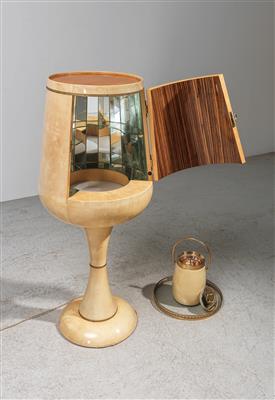
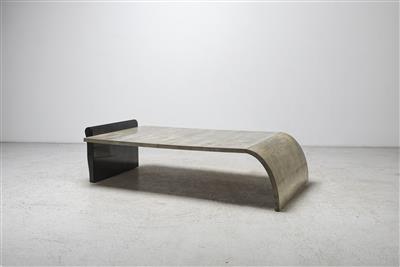
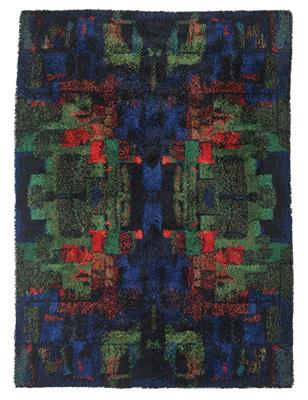
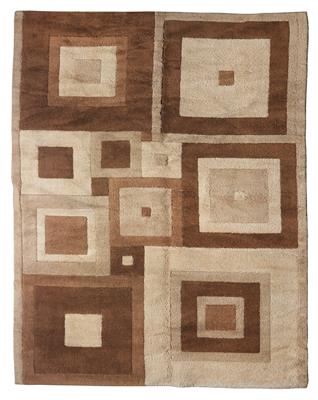
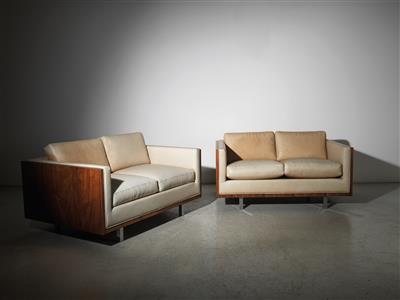
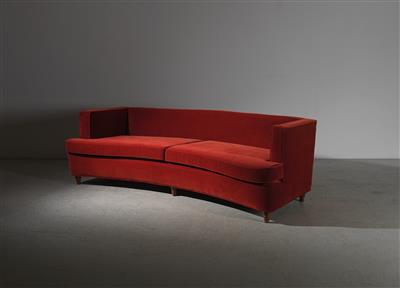
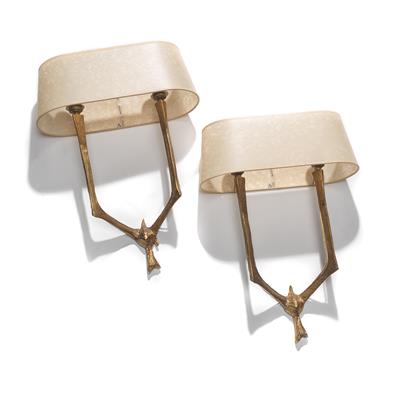
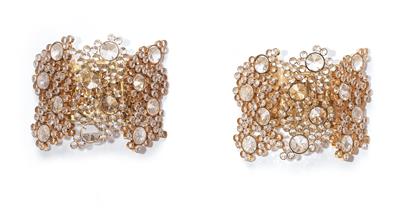
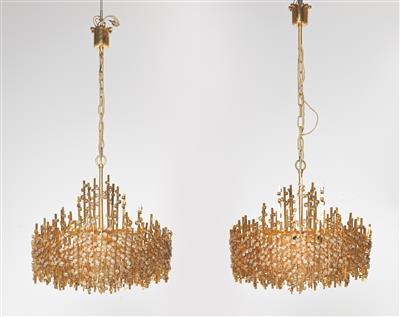
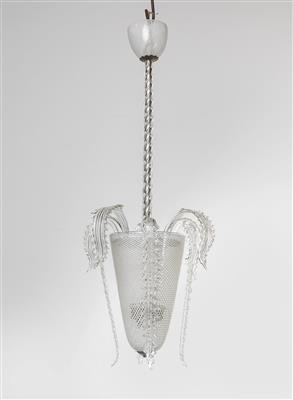
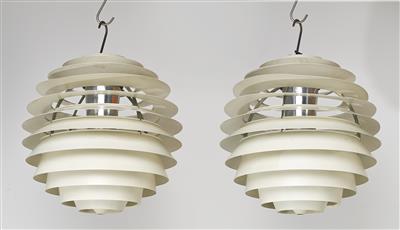
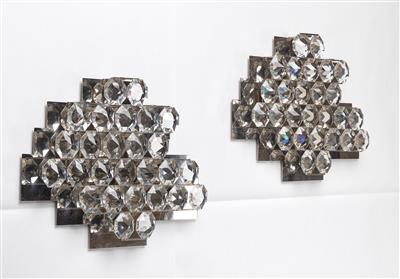
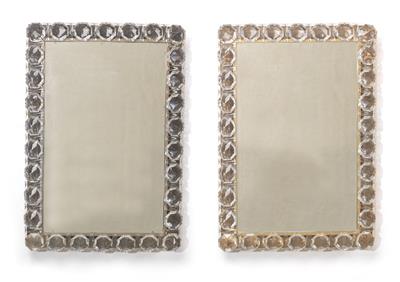
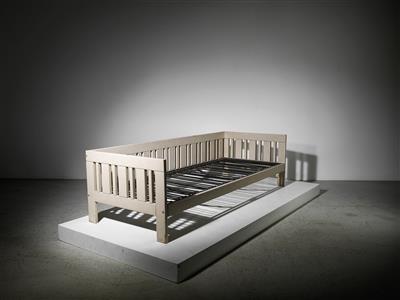
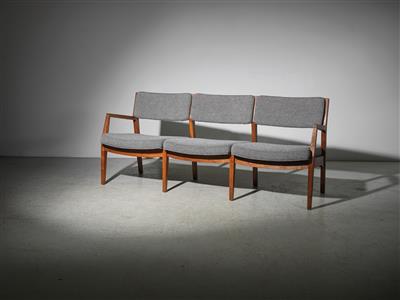
Try LotSearch and its premium features for 7 days - without any costs!
Be notified automatically about new items in upcoming auctions.
Create an alert